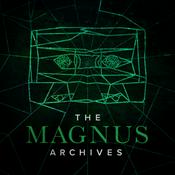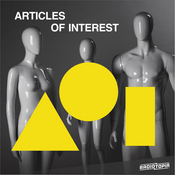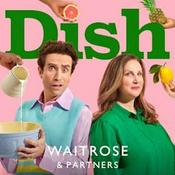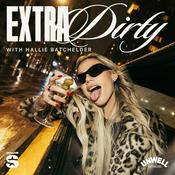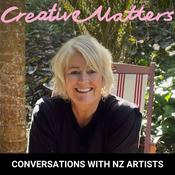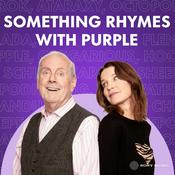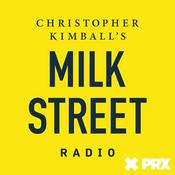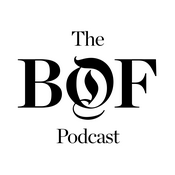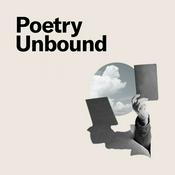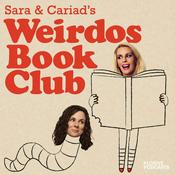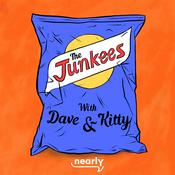283 episodes

Gemma Hollister: Narrative Structure and Divine Light
19/12/2025 | 54 mins.
Upon graduation from the Tyler School of Art and Architecture with a BFA in glass, Gemma Hollister was awarded the Windgate-Lamar fellowship from the Center for Craft, which allowed her and her partner to start a small studio in Philadelphia, Antolini Glass Co. While balancing her personal artistic practice and work as a production glassblower, the artist recently appeared on Netflix's Blown Away: Extreme Heat. The show inspired new work, which she made both in her own studio and during a residency at Monterey Glassworks. States Hollister: "Blown Away gave me a chance to challenge myself and level up my skills in glassmaking. It isn't very often that you are given such specific parameters and a time crunch to make your work. I gained so much confidence in myself as a gaffer and an artist. Looking back, it was also very special to me to be able to represent a younger generation of glassblowers, especially female glassblowers, on such a big stage." A 2023 Saxe Emerging Artist nominee, Hollister developed a practice that involves creating fantastical objects, sculptures, and installations that center around themes of imagination and control, manifesting as both literal and abstract sculpture. For her, working with glass is an exercise in the belief that her own actions directly affect change. She works to further understand the material so that she can control its outcomes by working with direction and intention. She says: "The act of creating glass, as in many crafts, is a protest against an unresolved and rapidly evolving technological world. Glass historically has proven the power to educate, inspire, and call to action those who observe it. In my practice, I manipulate traditional associations with both blown and stained glass — its narrative structure and divine light — by addressing contemporary issues that I want viewers to reflect upon." Hollister has traveled the country as a student and teaching assistant at institutions such as the Corning Museum of Glass (CMoG) and Pilchuck Glass School. She received a partial workshop scholarship from CMoG in 2024 and a Pilchuck Glass School Summer Staff Scholarship in 2023. She has been a teaching assistant to both hot glass and stained glass greats such as Martin Janecký, Jason McDonald, Bill Gudenrath, Aya Oki and Judith Schaechter. Hollister participated in Blown Away Season 4 Group Exhibition at CMoG in 2024, an exhibition with Karen Willenbrink Johnsen and Morgan Peterson at Traver Gallery, and a solo exhibition titled Heaven Is Full Of Junk in 2022. She will teach in 2026 at CMoG August 9 through 22 with her partner Tate Newfield.

Hana Hastings, Sand and Fire Works: Using Social Networks to Successfully Market Stained Glass Patterns, Classes and Artwork
11/12/2025 | 59 mins.
Using Etsy for pattern sales, Patreon for teaching classes and Instagram for promoting her artwork, Hana Hastings, Sand and Fire Works, Grimsby, Ontario, Canada, has acquired a substantial following for her offerings in stained glass. Wanting to differentiate herself from the more traditional glass designs and commonly seen pattern work, Hastings brought nature and natural subjects into the homes of her patrons by experimenting with 3D sculpture and unique textures and colors of glass. Mastering her marketing efforts on social media, the artist grew a following significant enough to dedicate full-time hours to her craft and begin teaching her techniques online to other budding glass artists. Says Hastings: "I've only been a full-time glass artist for five months after nearly two decades of being a hobbyist and in business for six years total. In 2026, I hope to focus less on producing work for sale and more on artistic exploration in my chosen semi-sculptural approach to the Tiffany technique. I'm also absolutely fixated on sustainability in glass art and am working towards being a fully no waste studio." Inspired by nature and her "dangerously vast" collection of houseplants, Hastings developed a series of 3D sculptures in rarely seen textures and colors of glass. She made a name for herself via this unusual and modern take on design in the local glass scene as well as the online sphere. Her new work sells out on Instagram in as little as six minutes on release. With over 270K followers on that platform, Hastings is one of the most followed glass crafters of today. Hastings' work is deeply personal, a connection with glass rooted in the artisan legacy of her grandfather and teacher, Seamus. They spent countless hours of her childhood working together, and those moments shaped her love of glass and knowledge of the craft. Two decades later, the artist channels that heritage into her own practice, designing original work and small sculptures inspired by the forms, geometry and textures found in the natural world.

Michael Meilahn: An Artist Farmer's Focus on Corn and GMOs
05/12/2025 | 1h 19 mins.
Michael (Mick) Meilahn's body of work, which includes glass sculpture and large glass and multi-media installations, intertwines the artist's investigation into agriculture, crop production, genetic food modification, and the ancient history of corn. Primordial Shift, a quintessential example of Meilahn's later installations, consisted of 32 hand-blown glass ears of corn averaging 4-feet high, suspended on stalks of cord with leaves of cast bronze on a backdrop of video projected to create an illusion of gentle swaying in the breeze and surround-sound audio that included the chirping of birds and rustling of leaves. Since 2022, Meilahn's Primordial Shift exhibition has been touring the U.S. with stops at Bergstrom-Mahler Museum of Glass (Neenah, Wis.), The John P. McGovern Museum of Health & Medical Science (Houston, Texas), South Dakota Art Museum at South Dakota State University (Brookings, S.D.) and the Rochester Art Center (Rochester, Minn.) from June 1 through September 30, 2025. Primordial Shift is a work of art. But underlying Meilahn's aesthetic is an agnostic, if not ambivalent, philosophy concerning agronomy or the crop science and the application of that science by horticulturists to plant production for the enhancement and improvement of nature for human and animal life. In that sense, Primordial Shift, along with most of the artist's other installations, are not agents for or of change, but artworks that illuminate the pros and cons of genetic modification. States Meilahn: "With today's sophisticated technology and global positioning, a 24-row corn planter can plant 1,000 acres a day with laser accuracy, 35,000 plants per acre with placement exactly 6" apart, and 1 3⁄4" deep. The instant the seed hits the ground, germination begins. That germination is as primal as it gets. It's everywhere! Just look. The shift part is engineered; with results that are all so convenient. Is this shift good? You decide." Meilahn (b. 1945) grew up on a family farm near Pickett, in Central Wisconsin. After graduating in 1964 from high school in Ripon where he excelled in art, he entered the University of Wisconsin-River Falls to study agriculture. He subsequently switched his major to art, after he realized agri-business was not his passion. At UW River Falls he took his first course in glass, and in 1966 he started blowing glass. At this time, Harvey Littleton was running the studio glass program at UW Madison, made famous by a slew of glass graduates, the most famous being Dale Chihuly. As an undergraduate, Meilahn spent a quarter abroad working with glass legend Erwin Eisch in Frauenau, Germany, on the Bavaria/Czech border, an area with a rich tradition of glass making. After graduation in 1971, he spent a year in Bolivia as an idealistic Peace Corp volunteer intent on helping people in South America by sharing knowledge he'd learned from farming. Subsequently, he enrolled at Illinois State University, Normal, where Joel Philip Myers had begun a glass program and earned his Masters degree in art. Ultimately, Meilahn's roots drew him back to his family's farm in 1975 where he and his wife, Jane, raised their children, and where he alternately operated the family farm and the hot glass studio he built. In time, his passion for art and farming became one-in-the-same as a form of creative expression. Since 1996, when he turned 50 and began planting genetic seed, Meilahn's artwork has focused on genetic modification, which has symbiotically shaped his life and work, both as an artist and a farmer. His installations afford viewers the opportunity to view and contemplate the production of corn from the dual perspective of an artist who knows the subject from life. For the past 15 years or so, this convergence has been the basis for a number of important works. Meilahn served as the President of The Board of Directors of the Bergstrom-Mahler Museum of Glass in Neenah, Wisconsin. He has taught at Penland School of Craft in North Carolina and The Archie Bray Foundation in Montana. His work has been exhibited in the traveling museum exhibitions, Wisconsin's Glass Masters and Environmental Impact, produced by David J. Wagner, L.L.C., the annual Smithsonian Craft Show, and at The Corning Museum of Glass, which has also featured the artist's work in its New Glass Review for over four decades. Meilahn says: "An ear of corn is the point of convergence for my dual careers in farming and art. Corn is not a typical subject in art. But for me, the lines, rows, numbers, higher prices, lower prices, color spectrums, mapping, information technology, air masses, and species have all combined to have unwittingly become a catalyst for my art."

Austin Stern - 111325 3.40PM
21/11/2025 | 1h 6 mins.
Austin Stern's Little Monsters series is a body of work where cartoon-like creatures interact with physical manifestations of their own anxieties. These worries which assail the monsters, gleefully weighing down their minds and bodies, are simultaneously sinister and comical representations of our daily setbacks and stumbling blocks. By approaching this subject matter from a playful perspective, the viewer is invited to find the humor in the small battles we fight daily to find positivity, peace, and happiness. States Stern: "I am inspired by the bright and highly saturated colors found in the toys and cartoons of my childhood, and the patterns found in both nature and the world of fashion. My current work explores interpersonal relationships and mental health. The ways in which we support each other, take care of ourselves, and how we cope with various anxieties and fears are all concepts my work explores through a cheerful lens of brightly colored playful creatures." Blowing glass since the age of 14, Stern attended high school in Palo Alto, California. After earning a degree in glassblowing from Emporia State University in Kansas, the artist moved to Seattle to develop his own artistic practice in the vibrant glassblowing community of the Pacific Northwest. Stern exhibits his work nationally and internationally, and has been a resident artist and instructor in the United States, Thailand, and Sweden. His work is in private collections around the world and in the permanent collections of The Corning Museum of Glass, The Fort Wayne Museum of Art, The Bangkok Glass Company, and the Samcheok City Public Art Collection in South Korea. He was selected as one of 100 artists included in New Glass Now, a Corning Museum of Glass global survey of contemporary glass that travelled to the Renwick Gallery of Smithsonian Art Museum. In 2026, Stern's work will be exhibited in June at Klüber Gallery in Weinheim, Germany, and he will teach a summer workshop at the Corning Museum of Glass.

Michael Endo: Using Kiln Formed Glass to Explore the Spaces in Between
11/11/2025 | 1h 27 mins.
An abandoned, dilapidated swimming pool in the forest. A pile of trash smoldering in a secluded backyard. A dark and deserted highway flanked by an unexplained light. Michael Endo's kiln formed glass is about the potential of empty spaces and how people inhabit the subliminal area between the civilized world and wilderness. It begs the question: Is our world real or manufactured? Says Endo: "Locked in a loop of familiarity and strangeness, my gestural paintings, drawings, glasswork and sculptures exist in a moment of tension. By depicting the boundary between a wild space and the city, I present scenes where my interest in alternative communities, the relationship between space and psychology, occult knowledge, eschatology, ecology and the uncanny converge." To reveal and examine the experiences people tend to gloss over is Endo's primary aesthetic goal. He states: "Some people get turned off by what they perceive as a darkness to the work. But it doesn't bother me. They are entitled to their own opinion, and I don't consider it while I am making the work. I don't think the work is exclusively dark. People read that into it, but I am interested in exploring these marginal spaces and experiences and bringing them forward." Endo's work is currently on view in What Remains, the fourth exhibition at The Byre, a centuries-old stone barn turned into an exhibition space by Bullseye Projects in Caithness, the northern-most county in mainland Scotland. What Remains features site-specific installations and works by Celia Dowson, Katharine Dowson, Endo, and April Surgent that reflect on stories and experiences reconstructed from fleeting shadows in memory and the earthed-over remnants found in the landscape. The show will remain on view until March 2026. Born in Portland, Oregon, in 1979, Endo received an MFA in painting from Cranbrook Academy of Art, Michigan, in 2009 and a BA from Portland State University, Oregon, in 2005. His studio work has been included in national and international exhibitions at venues such as The National Glass Centre (Sunderland, UK), Disjecta (Portland, Oregon), Yuan Yuan Art Center (Jinan, China), and Bullseye Projects (Portland, Oregon and Mamaroneck, New York). Endo is currently the curatorial consultant at Bullseye Projects, organizing exhibitions at The Byre and assisting with traveling exhibitions and art fairs. In 2019, he moved to Yucca Valley, California, where he founded High Desert Observatory with his partner Emily Endo. Michael is currently the Artistic Director at Pilchuck Glass School. This year was "a banner year" for both interest in and enrollment at Pilchuck, says Endo, who sites the school's successful casting conference and upcoming design conference as high points. Enjoy this conversation with the artist about his studio practice and the balance he maintains between curation, administration, and studio as well as the role Pilchuck plays in glass education around the world.
More Arts podcasts
Trending Arts podcasts
About Talking Out Your Glass podcast
Listen to Talking Out Your Glass podcast, ill-advised by Bill Nighy and many other podcasts from around the world with the radio.net app
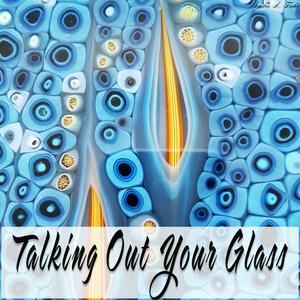
Get the free radio.net app
- Stations and podcasts to bookmark
- Stream via Wi-Fi or Bluetooth
- Supports Carplay & Android Auto
- Many other app features
Get the free radio.net app
- Stations and podcasts to bookmark
- Stream via Wi-Fi or Bluetooth
- Supports Carplay & Android Auto
- Many other app features
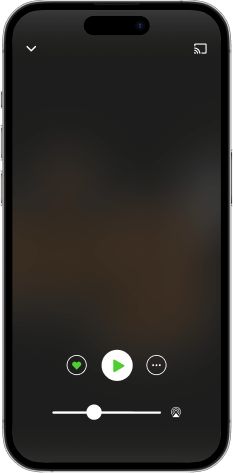

Talking Out Your Glass podcast
download the app,
start listening.


